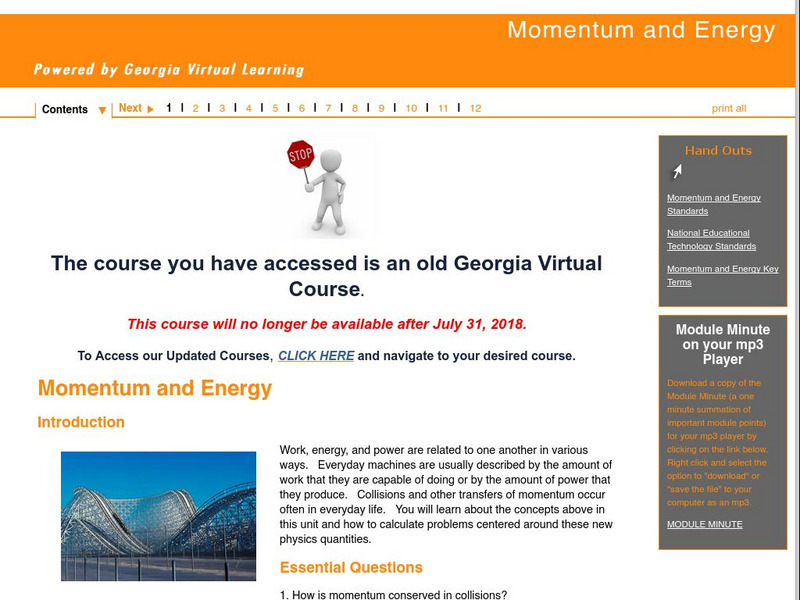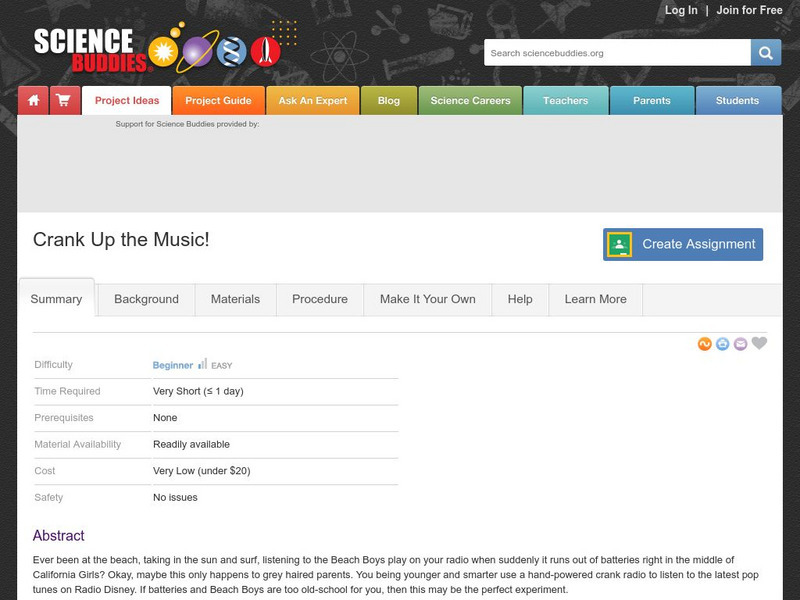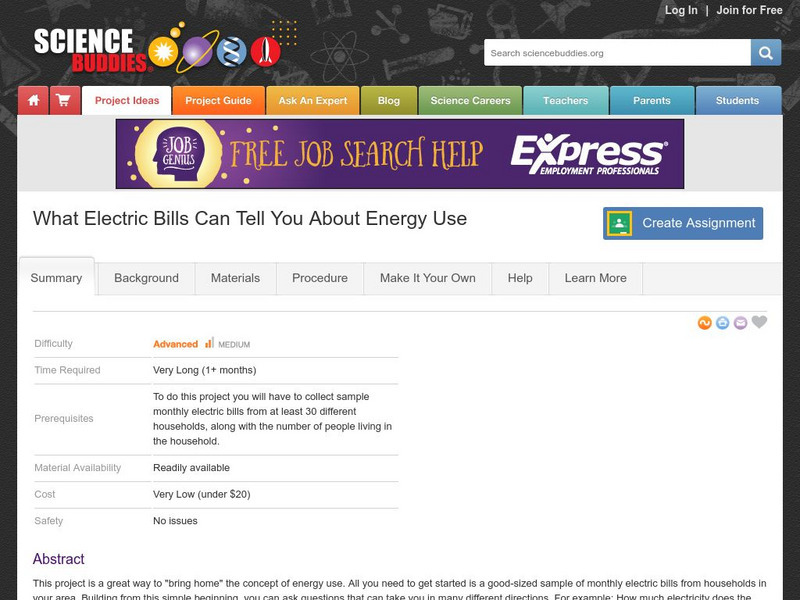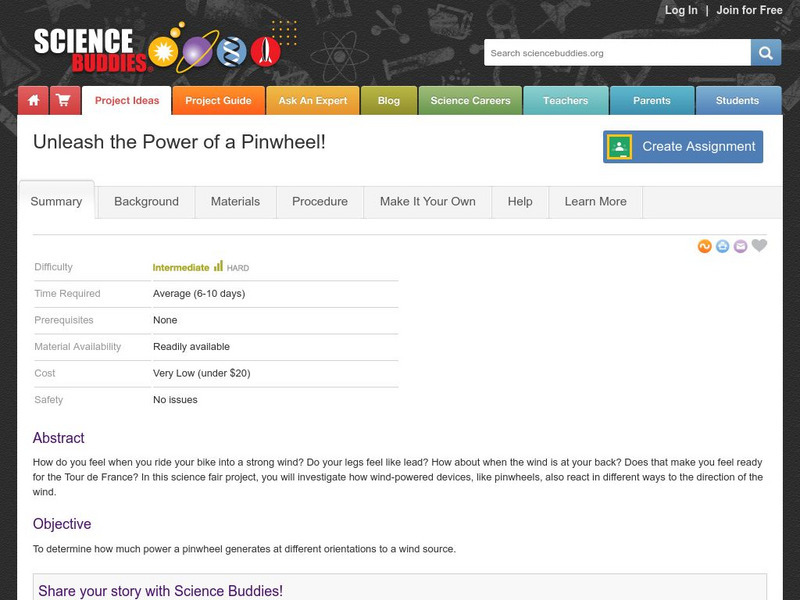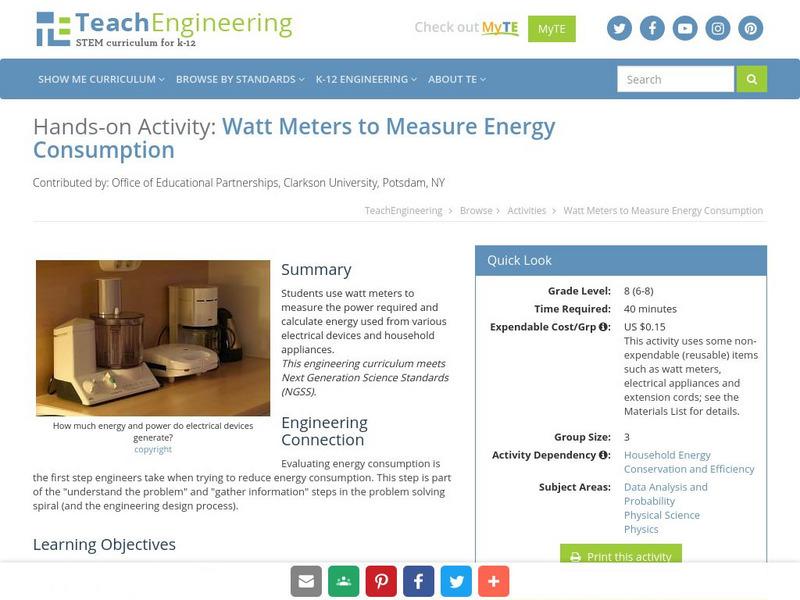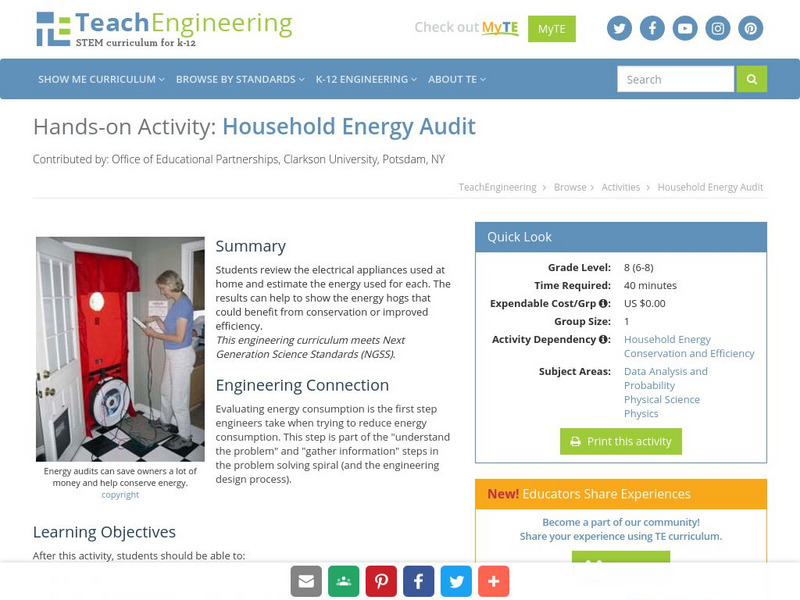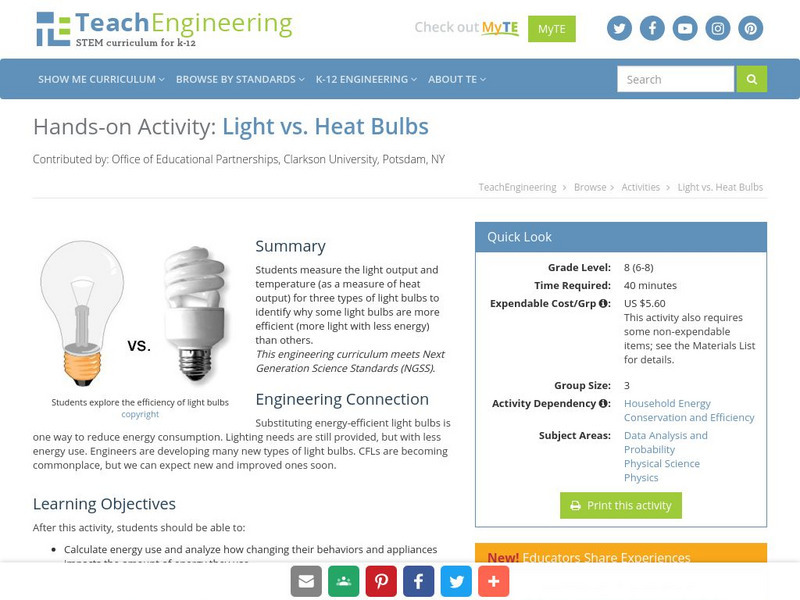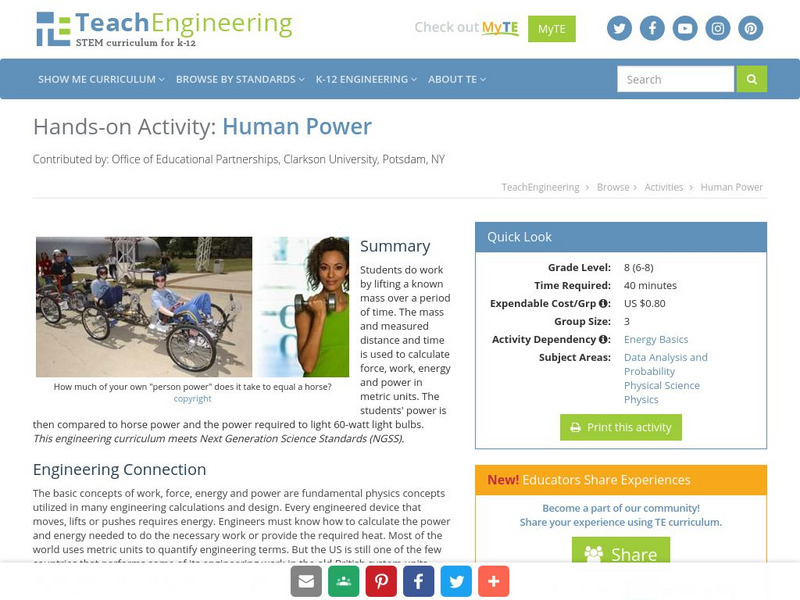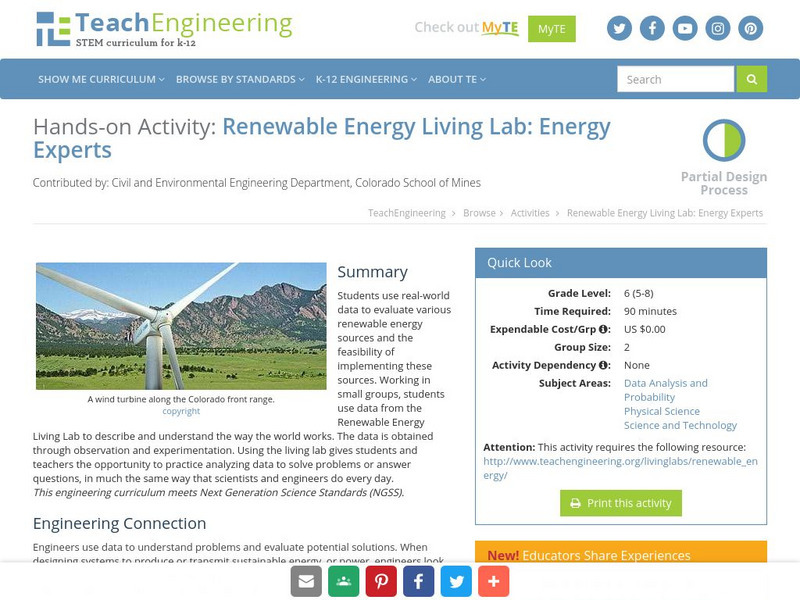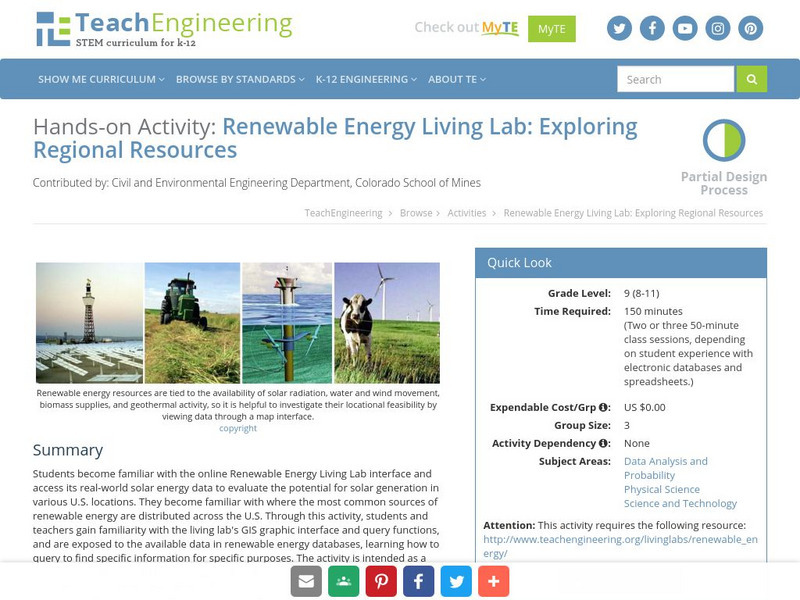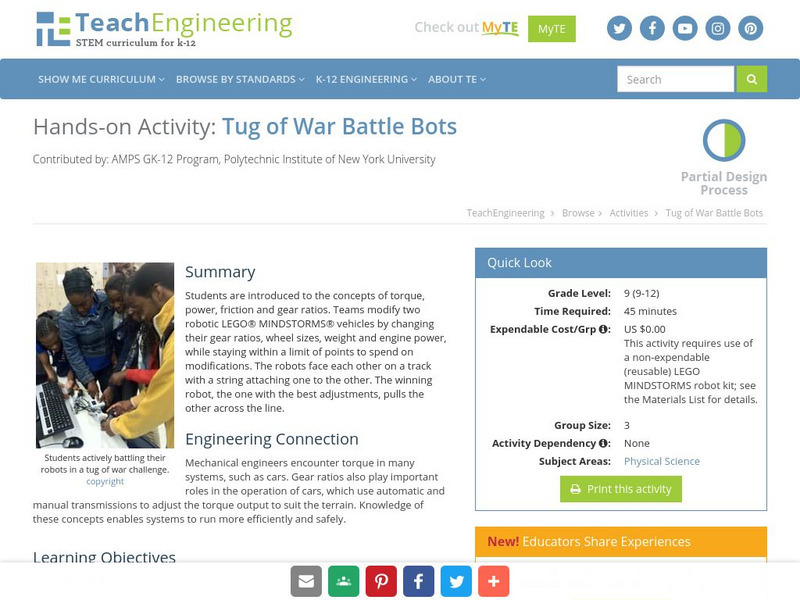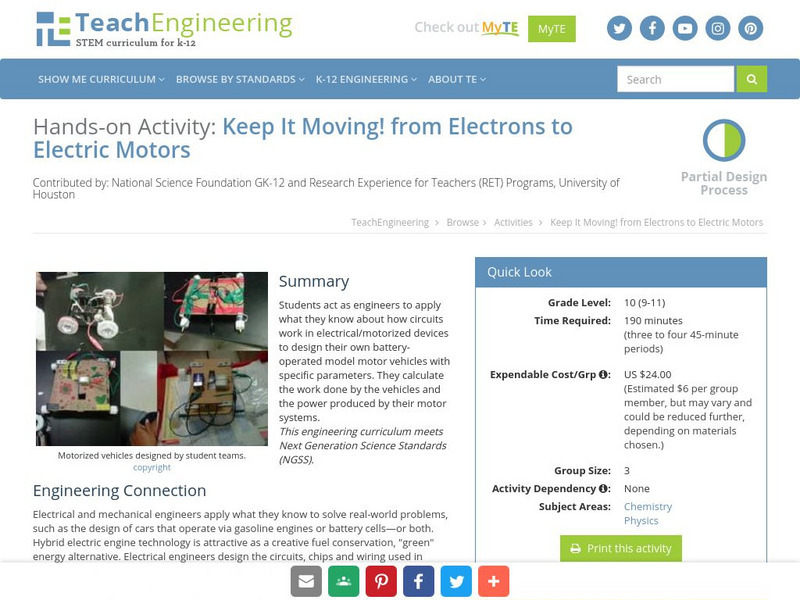Georgia Department of Education
Ga Virtual Learning: Momentum and Energy
In this module, students learn how work, energy, and power are related to one another in various ways. They also learn about collisions and the conservation of momentum.
TED Talks
Ted: Ted Ed: How Does Work, Work?
In this video, Peter Bohacek explains the interplay between work and power and how it can be seen in the functioning of a clock. [4:31] Followed by a short quiz and a list of additional resources to explore.
Science Buddies
Science Buddies: Solar Cell Power Output vs. Temperature
Solar cells provide a clean way of making electricity directly from sunlight. In this project you will build a simple circuit and experimental setup to investigate whether the power output of a solar cell changes with ambient temperature.
Science Buddies
Science Buddies: Crank Up the Music!
Cranked powered appliances and gadgets are becoming more and more prevalent. Items used in America such as flashlights and radios are one example. However, in third world countries, radios have many uses, some important and educational,...
Science Buddies
Science Buddies: What Electric Bills Can Tell You About Energy Use
This project is a great way to "bring home" the concept of energy use. All you need to get started is a good-sized sample of monthly electric bills from households in your area. Building from this simple beginning, you can ask questions...
Science Buddies
Science Buddies: Cold Room? Heat It Up With a Homemade Solar Air Heater
Humans need food, water, and warm shelter to survive. But a lot of humans depend on fossil fuels to supply gas and electricity to heat our homes. But burning fossil fuels to create energy is harmful to the environment. In this science...
Science Buddies
Science Buddies: Spare a Watt, Save a Lot
In this science fair project, you will investigate the different uses of electricity in your home. By identifying appliances, and determining how much energy they use, as well as which are phantom loaders, you can determine if there are...
Science Buddies
Science Buddies: Put Your Water to Work: Using Hydropower to Lift a Load
Water creates a lot of energy, just look at the Grand Canyon. In this science fair project, you will demonstrate the power of water by converting the kinetic energy in moving water to mechanical energy, which will lift a small weight.
Science Buddies
Science Buddies: Green Your Pc: Help Your Computer Save Power
Check out this science fair project to determine how much power your PC really uses, and if it is an energy hog, how you can reduce its appetite for energy. You will learn how to profile and streamline your computer's power usage, while...
Science Buddies
Science Buddies: Unleash the Power of a Pinwheel!
In this science fair project, you will learn more about wind-powered devices, like pinwheels. Much like pinwheels, we react in different ways to the direction of the wind when we ride bikes, or even try to walk.
Science Buddies
Science Buddies: Waste Not, Want Not: Use the Microbial Fuel Cell to Create Elec
Gross. What is that in the toilet? But maybe it's not just gross. Did you know there are bacteria that digest organic waste and create electrons? What if there was a way to collect those electrons to power a circuit? In this science fair...
University of New South Wales (Australia)
University of New South Wales: School of Physics: Physclips: Energy and Power
Learn about energy and power in this learning module that contains videos and animation.
Other
United Nations: Un Women
This site is the focus of the work done by the United Nations to support and promote the advancement of women in their efforts to achieve gender equality around the world.
Georgia Department of Education
Ga Virtual Learning: Currents, Resistors, and Power
In this interactive tutorial students will learn about electric current, resistance and current density. Learn how current density relates to electric field strength and how resistance produces heat.
Mind Tools
Mind Tools: French and Raven's 5 Forms of Power: Power and the Work Place
Understand the quality of how to hold power and influence others through John French's and Bertrum Raven's five elements of power, including legitimate, reward, expert, referent, and coercive. Learn how these powers are linked to become...
TeachEngineering
Teach Engineering: Watt Meters to Measure Energy Consumption
Students use watt meters to measure the power required and calculate energy used from various electrical devices and household appliances.
TeachEngineering
Teach Engineering: Household Energy Audit
Students review the electrical appliances used at home and estimate the energy used for each. The results can help to show the energy hogs that could benefit from conservation or improved efficiency.
TeachEngineering
Teach Engineering: Light vs. Heat Bulbs
Students measure the light output and temperature (as a measure of heat output) for three types of light bulbs to identify why some light bulbs are more efficient (more light with less energy) than others.
OpenStax
Open Stax: Power
In the following interactive students will begin to calculate power by calculating changes in energy over time. They will examine power consumption and calculations of the cost of energy consumed.
TeachEngineering
Teach Engineering: Human Power
Students do work by lifting a known mass over a period of time. The mass and measured distance and time is used to calculate force, work, energy and power in metric units. The students' power is then compared to horse power and the power...
TeachEngineering
Teach Engineering: Renewable Energy Living Lab: Energy Experts
Students use real-world data to evaluate various renewable energy sources and the feasibility of implementing these sources. Working in small groups, students use data from the Renewable Energy Living Lab to describe and understand the...
TeachEngineering
Teach Engineering: Renewable Energy Living Lab
Students become familiar with the online Renewable Energy Living Lab interface and access its real-world solar energy data to evaluate the potential for solar generation in various U.S. locations. They become familiar with where the most...
TeachEngineering
Teach Engineering: Tug of War Battle Bots
Students are introduced to the concepts of torque, power, friction and gear ratios. Teams modify two robotic LEGO vehicles by changing their gear ratios, wheel sizes, weight and engine power, while staying within a limit of points to...
TeachEngineering
Teach Engineering: Keep It Moving! From Electrons to Electric Motors
Students act as engineers to apply what they know about how circuits work in electrical/motorized devices to design their own battery-operated model motor vehicles with specific paramaters. They calculate the work done by the vehicles...
